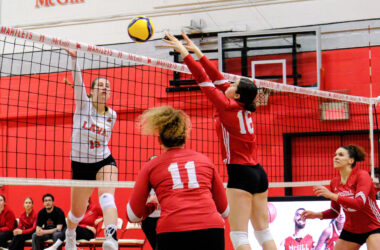Canada and the United States are often criticized for their lack of soccer culture. Though some cities’ enthusiasm shows that the two countries’ soccer culture is alive and well, the city-concentrated support for Major League Soccer (MLS) and National Women’s Soccer League (NWSL) teams is not as pervasive as it could be.
Unlike most successful soccer leagues, Canadian and American leagues—including the MLS and the NWSL—do not have a system of promotion and relegation. Systems of promotion and relegation typically consist of three or four leagues organized according to strength: The top league is where the strongest teams play, the middle league where average teams play, and the bottom league where the lowest-performing teams compete for a chance to advance. Top finishers of lower-tier leagues are promoted to the next-highest level for the following season, while bottom finishers are demoted to the league immediately below their own.
If North American soccer culture wants to continue to grow its fanbase, it must implement relegation. Without this system in place, teams drop off to an uncompetitive level of soccer as the top spots in the league become unattainable. Low-performing teams become comfortable with knowing that they will remain in their league with guaranteed access to the financial benefits of playing at the top tier.
Implementing a system of promotion and relegation eliminates that sense of security. Cincinnati FC, for example, was dead last in the MLS Eastern Conference for three consecutive years, facing few consequences—except the disappointment of their fans—for their consistent abysmal performance. The Houston Dynamo has been the Western Conference’s equivalent to Cincinnati, having placed in the bottom three every year since 2019. Although every team naturally wants to win, teams become complacent when there is no sense of urgency, or incentive, to improve. The threat of relegation would put pressure on teams to maintain a competitive level throughout the entire season because too low of a finish could warrant demotion.
The prospect of promotion, on the other hand, would be an excellent motivator. Teams in lower-ranked European leagues still have heavily invested fanbases who remain invested throughout the season because winning records in lower leagues could actually move them up. To fans of bottom-of-the-table teams, relegation drama can have the same allure as title-race drama. This highly contentious aspect of European soccer is why so many Canadian and American fans opt to support an overseas team instead of an MLS or NWSL team.
The NWSL does not currently have an affiliated second-tier league, but is in the process of planning for one. Introducing a relegation system could complement the new league and would likely propel the growth of women’s soccer, with fans getting to experience the highs and lows that come with the risk of demotion and the prospect of promotion.
However, men’s soccer in Canada and the U.S. already has a multi-tiered system, with the United Soccer League (USL) as well as USL League One and League Two sitting under the MLS. So, implementing promotion and relegation shouldn’t be a difficult task. Several USL teams already have thriving fan bases that will continue to grow if the more successful teams have the chance to get promoted to the MLS.
Despite concerns regarding poor USL teams’ ability to compete, performances at the yearly Open Cup, a tournament where MLS and USL teams face off, prove otherwise. Last year’s Open Cup in particular showcased the USL talent, with several teams taking down their MLS opponents to advance to later rounds.
Promotion and relegation will give newly-promoted teams a chance to compete for the top spots in the MLS—just like how the English team Leicester went from being a second-division team to winning the Premier League in less than five years. The MLS and the NWSL must implement promotion and relegation if they hope to recreate spectacles and capture sustained interest from fans. Everyone loves a good underdog story, so let’s create some in North American soccer.
A previous version of this article stated that the Houston Dynamo came in last place every year since 2019. In fact, they placed in the bottom three over this time period. The Tribune regrets this error.








